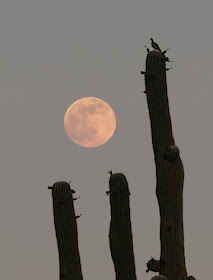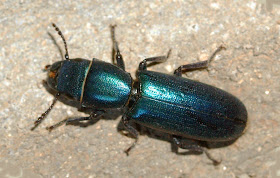So I'm finally back to blog-writing after an excellent, exciting, 8 day trip to Costa Rica. For the following week I was busy trying to identify my hundreds of Costa Rican bug photos and posting them on Flickr. Right then Yahoo decided to really make things difficult for those of us who value information as much as pretty pictures...Oh, well, there is no way I can move my 17 000 pictures with all their ids and collection info, so I'm staying with Flickr.
Last week, my last art show for the season, the Phippen Museum Western Art Show and Sale in Prescott required a lot of preparation - and it (the sales) turned out so much better than expected! It was great fun, too, with beautiful art, artist friends from all over the country, warm hospitality of the Phippen Family and a greatly expanded Museum...more about it on my Watercolor Blog.
But now a big shout-out for the people who organized my Costa Rica adventure, Mark Deering (US) and Ernesto Rodriguez (CR).
Mark had advertised this tour on Facebook. According to his own background it was geared towards ecologists with special interest in insects. (In fact, most of the participants were managers of American and European butterfly houses) The proceeds would go partly to the butterfly farm El Bosque Nuevo in Guanacaste whose manager Ernesto was our other competent guide.
 |
| Palo Verde National Park |
This was Mark and Ernesto's first attempt at organizing eco-tours. While they certainly didn't lack professionalism where it was needed, they handled the whole trip more like an adventure among good friends or a family outing than a business venture. From the time we set foot on CR soil to the time our planes took off again, we were all taken care of so completely that I never got around to exchanging and using any of my spending money.
On arrival and departure days Mark was constantly shuttling between
hotel and Liberia Airport because we all arrived at different times.
Still, he even filled every minute of the waiting time for early
arrivals with trips to nature parks and beach...
Mark was joined on this trip by his mother who very much enjoyed herself. She had brought along a step-counter and found out that the bouncy dirt roads that we were traveling by car added many miles to her daily activity count.
During the entire trip there was no down time. Excursions covered different habitats, from riparian areas with waterfalls, to dry forest, cloud forest, places that reminded of deserts, the beach, volcanoes ... always interspersed by opportunities to take a refreshing dip in a hot spring or a clear creek between fern trees and mossy rocks where basilisks were staring at us.
 |
| Rio Celeste |
The diversity of the natural world was breath taking. All participants were accomplished naturalists and so many trained eyes
were spotting White Witches, iguanas, army ants, monkeys, Puff Birds, Motmots and
Trogons in nearly every tree. Cameras were clicking constantly, the
collecting of specimens is mostly prohibited in CR.
So Mark and Ernesto kept us busy. From early morning bird walks to nightly (!) bug-lighting there was a constant stream of interesting activities and we only sat down to travel to new destinations and for scrumptious meals. The delicious Costa Rican cuisine consists of fresh fruit, rice and beans, freshly caught fish and grass-fed beef, did I mention rice and beans?
 |
| Finca Mariposa el Bosque Nuevo, Butterfly Farm |
The warmest hospitality greeted us at the
Butterfly Farm El Bosque Nuevo itself. In the beautiful airy building constructed of homegrown teak we felt at home within hours. The people living and working there seemed a great community and took us in like old friends. They showed us their intricate work with beautiful butterflies, caterpillars and their host plants, and fragile pupae that were prepared for shipment to butterfly houses all over the world.
Ernesto shared the difficult history of a farm struggling to be ecologically sustainable but yet profitable enough to nurture the little community that depends on it. After little success with teak production, butterfly farming seems to be a profitable solution that is easy on the environment and in fact allows the owners to return much of the plantation area to a natural state and even buy surrounding areas to be protected as a preserve.

After three nights at the farm we spent two nights at a hotel at the foot of the active volcano Rincon de la Vieja. The mountain sides are covered in beautiful old-growth cloud forest. Smelly gases bubble from mud pools and hot springs. I hope I get around to detailed descriptions of our hike there. But I also very much enjoyed the gardens of the hotel shaded by flame trees, where trogons greeted us in the morning, parrots screamed in the canopy and jacanas stalked around a pond full of mating Cane Toads (I know, ecologically disastrous, but fascinating). Some of the best beetles showed up at the black light there.
The last two days took us to a very nice beach for snorkling (wear t-shirts in the water, most of us got sun burned, because one ALWAYS forgets the time when the puffer fish are being really cute!) and to a new, posh resort in a desert-like dry area. Close by, lush jungle in a deep-cut canyon provided a most striking contrast, complete with Howler Monkeys and Anolis.
So during our trip we were introduced to many extremely different habitats even though it all happened within only one state, Guanacaste, so we never entered the true rainforest on the Atlantic side of the country.
 |
| Along Rio Perdito |
Overall, I find it difficult to chose what I liked best. Black lighting in three incredibly rich habitats with fellow insect enthusiasts like Mark Deering and Marty Feathers was definitely among the highlights (especially since Mark sacrificed himself to absorb most of the stings of those hyper-night-active Costa Rican wasps and bees.) Hours of riding with Ernesto in his truck, watching old Costa Rican cowboys (every Costa Rican boy once wanted to be one), learning about the huge Brahman cattle ranches, butterfly breeding on small family farms, citrus orchards, rice fields, volcanic ash layers, endemic grasses that were mostly just roughage for the cattle and should be replaced by more nutritious grasses- which reminded me vividly of our AZ buffel grass problem - made the whole experience very real and personal.
What I didn't like: how fast the time flew by. I guess I just have to go back next year.



























































